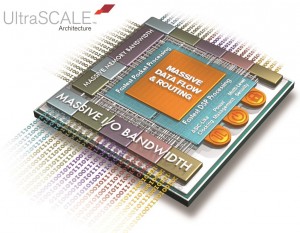FTDI Chip has enlarged the development ecosystem surrounding its Embedded Video Engine (EVE) platform for advanced human machine interface (HMI) implementation.
 The latest additions concern the FT810 series of high resolution EVE ICs, which are now in full scale production. In order to support these devices, the company has announced the VM810C50 family of compact development modules. They extend the functionality offered by the VM800C family that accompanies the FT800 series, so that large higher clarity imagery can be rendered and faster data transfer rates benefitted from.
The latest additions concern the FT810 series of high resolution EVE ICs, which are now in full scale production. In order to support these devices, the company has announced the VM810C50 family of compact development modules. They extend the functionality offered by the VM800C family that accompanies the FT800 series, so that large higher clarity imagery can be rendered and faster data transfer rates benefitted from.
The VM810C50A-D features a 5.0-inch TFT display with WVGA (800×480 pixel) resolution and a resistive touchscreen. Conversely, for the VM810C50A-N, the display is not included.
Instead, through use of its 40-pin FFC interface, a suitable 4.3/5.0-inch LCD (with SVGA, WVGA, VGA, WQVGA or QVGA resolutions and a 4-wire resistive touch screen interface) may be attached. This means that the appropriate display can be chosen and subsequently connected.
Both of these credit card sized units act as SPI slaves connecting to the specified system microcontroller through their single SPI interfaces.
They each have a built-in micro speaker, audio power amplifier, 3-stage audio filter, an audio line out option and LCD backlight control.
Power can be drawn for these modules via either the 2.0mm power jack, the USB Micro-B port or SPI interface. The SPI interface supports 5V tolerant buffers when using a 5V SPI supply.
The FT810 EVE devices from FTDI Chip combine touch, display and audio functionality on a single chip and employ the innovative approach to HMI implementation that has been pioneered by the company. Here images, templates, overlays, fonts and sounds are treated as objects.
Using this object-orientated methodology, graphics can be rendered line-by-line at 1/16th pixel resolution, as opposed to pixel-by-pixel.
This streamlines implementation, allowing marked reductions in cost, board real estate and system complexity. The FT810 and other members of the FT81x series are able to work with displays of up to 800×600 pixels.
They have 18-bit or 24-bit RGB interfacing options, plus 1Mbytes of RAM capacity for storing graphics data. A built-in JPEG decompression engine provides better graphics data usage and enables more effective HMI implementation.
These devices support multiple colour palettes of 16-bits and 32-bits with transparency. Their SPI interfaces support 30MHz operation.
david manners










